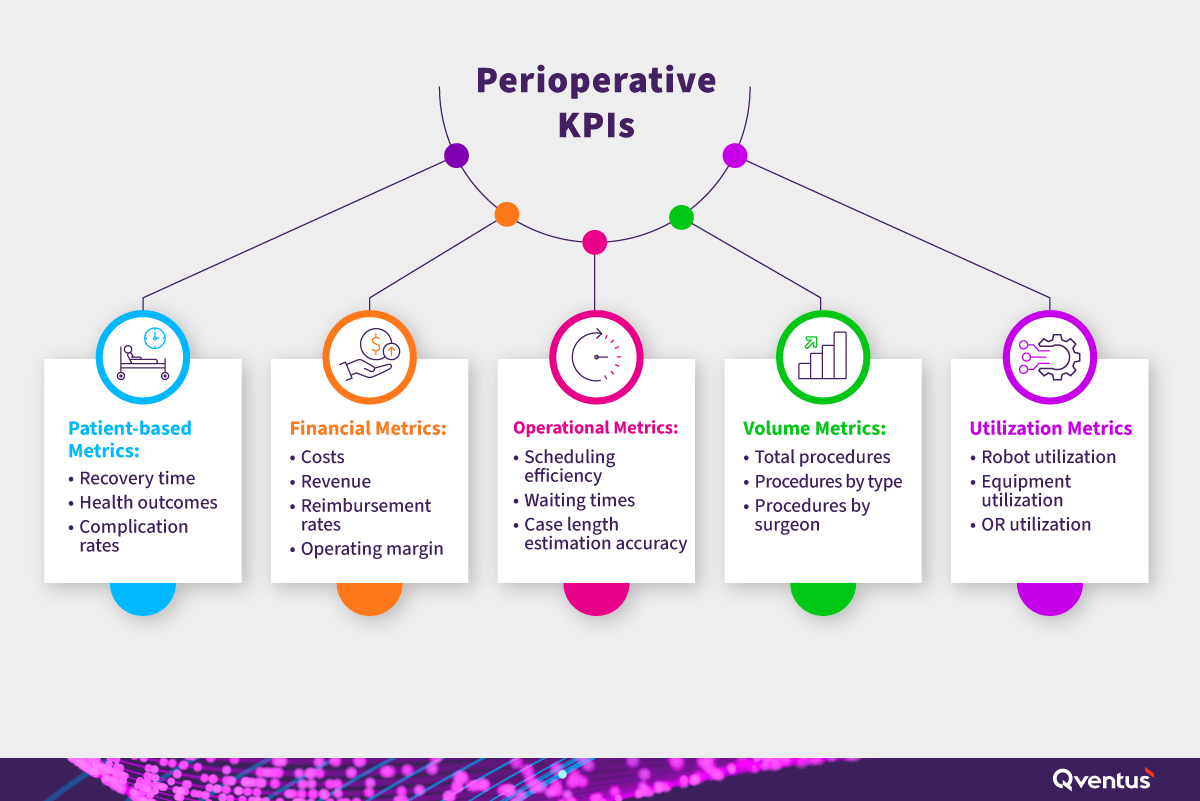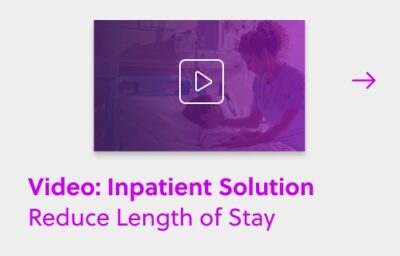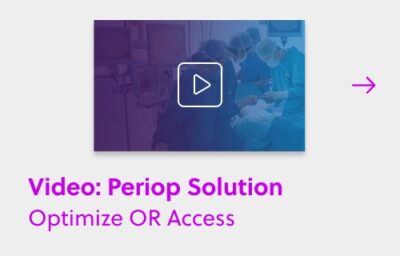Surgical advancement has occurred rapidly since the 19th century. Since then, we have made leaps and bounds in surgical innovation, from the first human blood transfusion in 1818 to the first whole eye transplant in 2023. As surgical techniques become more advanced, so does the data available to make informed decisions regarding surgical procedures, operations and scheduling.
In the dynamic field of healthcare, surgical centers and hospitals have to work continuously to improve efficiency and optimize workflows to take on an increased quantity of patients without sacrificing quality of care or requiring more staff. That’s where surgical and perioperative analytics come into play to create more predictive, precise, and patient-centered care.
The Foundation of Perioperative Analytics
Perioperative analytics focuses on the optimization of care throughout the surgical process. Organizations can gain insights that lead to improved operational excellence by analyzing perioperative data. Key performance metrics for perioperative teams usually include volume, utilization, operational, patient-based, and financial indicators. Data surrounding these KPIs (Key Performance Indicators) can be used to optimize surgical practices, predict surgical outcomes or surgery trends, enhance patient care, and streamline operational procedures.

Some examples of aggregate data points that can be analyzed are:
- Surgical Procedure Types: Frequencies, durations, and outcomes of specific surgical procedures.
- Complication Rates: Types and rates of surgical complications, both intraoperative and postoperative.
- Surgeon Performance Metrics: Surgeon-specific outcomes, including complication rates, surgery durations, and patient recovery times.
- Patient Outcomes: Survival rates, recovery times, readmission rates, and long-term health outcomes post-surgery.
- Patient Satisfaction Scores: Patient feedback on their surgical experience, including preoperative and postoperative care.
- Cost and Reimbursement Data: Financial data related to surgical procedures, including costs, billing codes, and reimbursement rates.
- Resource Utilization: Usage of surgical instruments, consumables, and technologies during procedures.
- Preoperative Assessments: Data on patient health evaluations, risk assessments, and pre-surgical screenings.
- Operational Metrics: Scheduling efficiency, operating room utilization rates, and wait times for surgery.
- Postoperative Care Metrics: Complication rates, length of hospital stay, and discharge outcomes.
Role of Machine Learning and AI in Surgical Analytics
Efficient data aggregation and finding actionable insights remain a challenge for many hospitals and health systems. Machine learning and AI provide the engine for innovation within surgical analytics.
By ingesting data provided by the EHR, like patient medical histories, outcomes of previous surgeries, surgical time, or length of stay, machine learning algorithms can identify patterns or correlations within the data that allow more informed decision-making. They can also be used to automate processes according to data, if applicable. For example, a machine learning model might identify that the estimated time for a specific type of surgery is regularly longer than the actual time required, allowing for time to be opened up and more cases to be booked into that open time. Once identified, the model could note that insight and send an automated schedule adjustment request for the likely unused block time as a result.
Why Perioperative Analytics Utilization is on the Rise
Perioperative and surgical analytics play a pivotal role in the landscape of value-based care, focusing on improving operational efficiencies and reducing costs, all while maintaining or enhancing the quality of patient care. Perioperative care accounts for a significant portion of hospital admissions and margins but also represents a major influence on the total variable costs associated with hospital supply and care delivery.
Adopting perioperative analytics enables healthcare providers to dissect and understand the complexities of surgical care processes, identifying which practices are most efficient and effective. By leveraging data-driven insights, hospitals can enhance care coordination, improve the quality of perioperative services, and address the unique preferences and needs of individual surgeons and patients.
How Qventus Can Help You Leverage Data Science
Qventus stands at the forefront of the transformative journey into AI/ML-powered decision-making. With solutions designed to streamline scheduling, enhance OR access and maximize utilization of robotic surgery, healthcare organizations partnering with Qventus are uniquely positioned to increase utilization rates, case volume and patient satisfaction. For example, Saint Luke’s Hospital implemented Qventus and saw 700 hours of OR block time released early, with 45 percent utilization of that released time after implementing Qventus.
If you’re lacking an analytics solution and are interested in learning more about simplifying scheduling, unlocking OR access, and increasing utilization, schedule a call with our perioperative solution experts.


